Ivory carving master remains committed to reviving, carrying forward traditional craft
Galloping horses, people with vivid facial expressions, beautiful women playing Pipa (a kind of pear-shaped stringed instrument), and men playing football, these mammoth carving artworks featuring the Tang Dynasty have never failed to remind people of the glorious culture of ancient China.
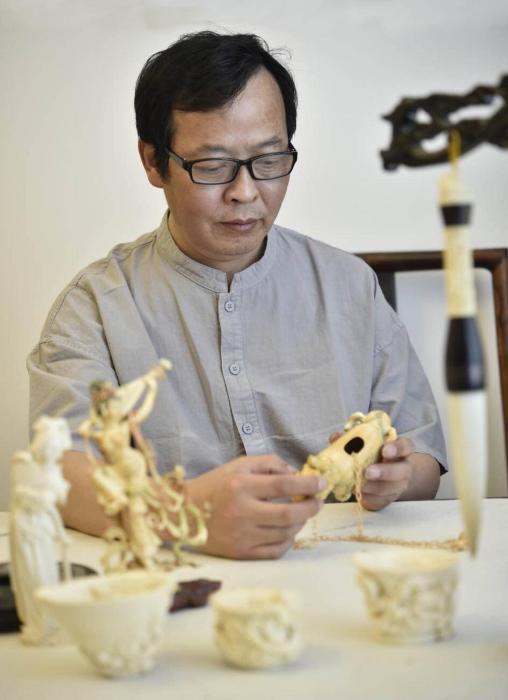
Photo shows Dai Deyu presenting a piece of artwork he completed. (Photo/yangtse.com)
According to the carver who created these artworks, Dai Deyu, in order to present the vigor of the horses and give the animals a heroic touch, he had to pay special attention when choosing the raw materials and proportioning the body shape of the horses, having also made sure that the other details, such as the ornaments adorning the horses, were vividly carved.
Ivory carving is a national intangible cultural heritage item in China and an intangible cultural heritage item in Nanjing, capital city of east China’s Jiangsu province. An inheritor of the craft, Dai said that ivory carvers must have extensive fine arts and carving skills, have profound knowledge of traditional culture, and be sensitive, so that their works are easily understood by its viewers.
Ivory carving in China dates back to the Neolithic Age and peaked during the Ming Dynasty (1368-1644) and the Qing Dynasty (1644-1911). Beijing and Tianjin in northern China, Shanghai and Nanjing in east China and Guangzhou in southern China were ivory-carving centers at various times. The carving artworks commonly seen in Nanjing are known for their high degree of resemblance to artifacts belonging to ancient times.
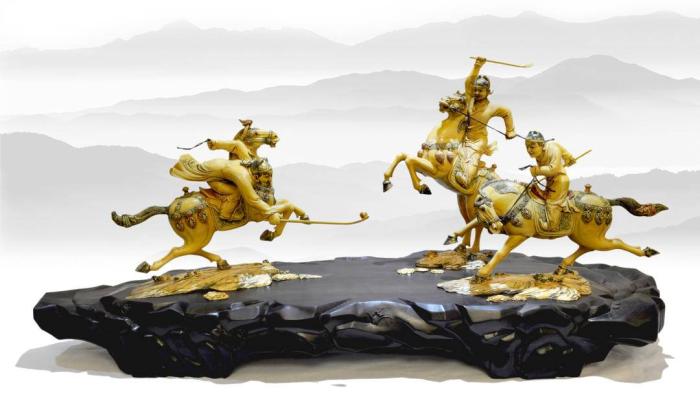
Photo shows an artwork created by Dai Deyu that features men in ancient times playing polo. (Photo/yangtse.com)
Dai explained that it is the color schemes and the crackled patterns on the surface of the artworks that have made the modern-day carvings look like antiques. In addition, the crackled patterns produced through the use of special techniques won’t affect the integrity of the piece as a whole.
A skilled craftsman as he is, Dai has mastered different carving techniques, including three-dimensional sculptures, freestanding sculptures, relief sculptures, and hollow sculptures, saying it takes him about three months to finish a single piece of carving work.

Photo shows an artwork created by Dai Deyu featuring a horse. (Photo/yangtse.com)
After China ended the commercial processing and sale of ivory at the end of 2017, ivory carvings began to fade out for a period of time. At the turn of the century, many ivory practitioners started to use fossilized mammoth ivory as a substitute for elephant tusks. With these craftsmen having switched to mammoth ivory carvings, the traditional art was kept alive once again.
Dai followed his grandfather and elder brother into the carving craft, beginning first as an apprentice. “You have to learn all the necessary techniques about ivory carving and it takes a long time to master each of the techniques. For instance, without 10 to 20 years of practicing, it is impossible for one to skillfully create crackled patterns on the surface of the carved objects,” Dai explained.
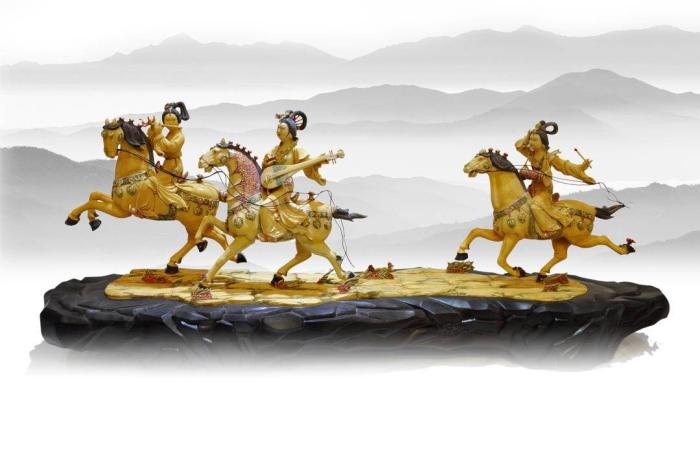
Photo shows an artwork created by Dai Deyu featuring women in ancient times going for a sojourn in a spring. (Photo/yangtse.com)
In 2006, ivory carving was listed as a national-level intangible cultural heritage. In the same year, China ramped up efforts to protect and rescue intangible cultural heritage. Nowadays, Dai hopes that he can have one apprentice or two so that he can teach ivory carving techniques to them. He has also held lectures on the craft in universities.
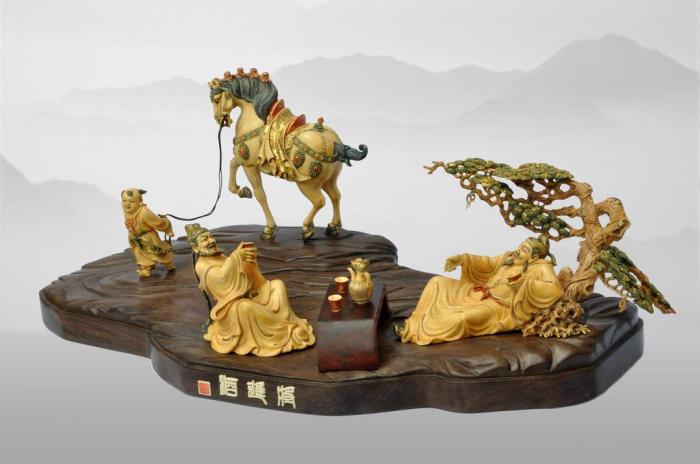
Photo shows an artwork created by Dai Deyu featuring men drinking wine. (Photo/yangtse.com)

Photo shows an artwork created by Dai Deyu featuring a man taming a horse. (Photo/yangtse.com)
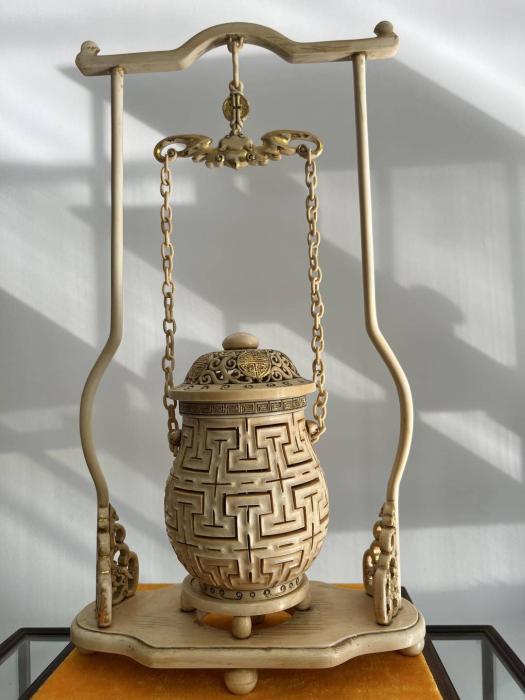
Photo shows an artwork created by Dai Deyu featuring a wine container. (Photo/yangtse.com)
Photos
Related Stories
- NW China's Suoyang City Ruins home to intact ancient military defense, irrigation systems
- Neolithic ruins in Zhejiang eyes World Cultural Heritage
- Hong Kong intangible cultural heritage debuts at 4th CIIE
- China, Asian counterparts initiate alliance for cultural heritage conservation
- Intangible cultural heritage exhibition in Greater Bay Area attracts visitors
Copyright © 2021 People's Daily Online. All Rights Reserved.










